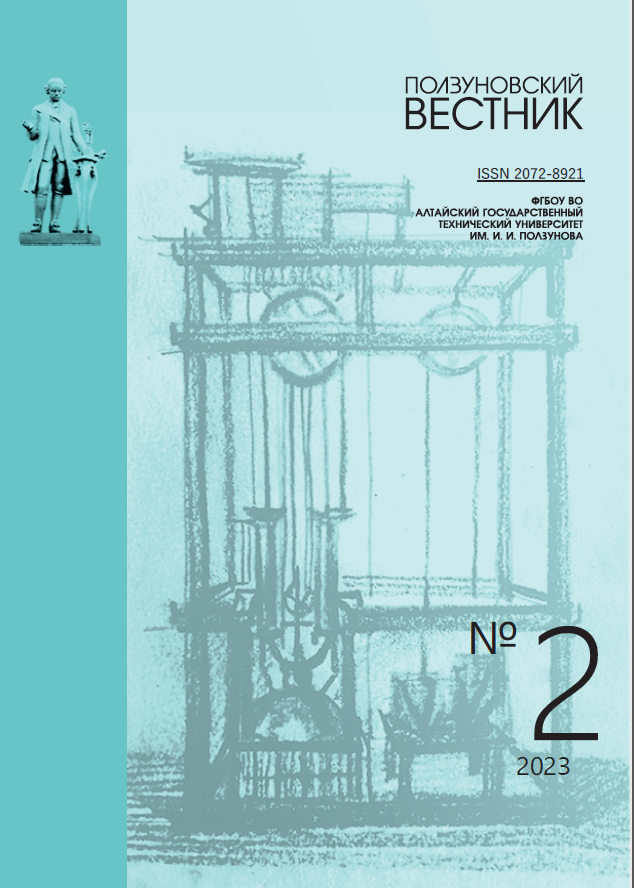USE OF NANOCELLULOSE FOR MODIFYING WATER-SWELLING RUBBERS BASED ON NATURAL RUBBER AND SODIUMCARBOXYMETHYLCELLULOSE
USTCKL
DOI:
https://doi.org/10.25712/ASTU.2072-8921.2023.02.027Keywords:
Water-swellable rubbers, superabsorbent polymer, packer, natural rubber, sodium carboxymethyl-cellulose, nanocellulose, physical-mechanical properties, swelling degreeAbstract
Water-swellable rubbers (WSR) are a new type of elastomeric functional materials. They have the properties of conventional elastomers and are also able to swell when in contact with liquids. WSRs have been developed based on mixtures of natural rubber (NR) and a superabsorbent polymer - sodium carboxymethylcellulose (Na-CMC), obtained by the method of liquid-phase combination of their aqueous suspensions. Investigations have been carried out on the modification of WSR based on NR/Na-CMC with nanocellulose (NC) to improve the physical and mechanical properties before and after rubber swelling in various liquid media. The ratio of polymers in their mixtures varied. Compositions were prepared on their basis in the Brabender Plasti-Corder Lab-Station mixer. Vulcanization was carried out in a hydraulic press for 12 min. at a temperature of 145 °C under a pressure of 10 MPa. The swelling of vulcanizates in distilled water, formation water, oil (Nurlatneft) was studied. The physical and mechanical properties of rubbers were determined on a tensile testing machine (INSTRON 5582 - 100kN). The rubber morphology was studied by scanning microscopy on a (JEOL-JSM-6510) instrument. An increase in the degree of swelling of WSR in liquid media and a decrease in their physical and mechanical properties with an increase in the content of Na-CMC were established. The swellability of WSR depends on the medium and is arranged in a row: distilled water > formation water > oil. The maximum swelling in distilled water (805% wt.) have WSR based on a mixture of 50 NR/48,5 Na-CMC/1,5 NC (% wt.). WSR modified with nanocellulose (2,0% wt.) have better physical and mechanical properties before and after swelling: the conditional tensile strength is 7,8 MPa (before swelling) and 3,6 MPa (after swelling) compared to unmodified WSR: 6,0 MPa - before swelling and 2,8 MPa - after swelling. An increase in the content of nanocellulose in vulcanizates leads to an increase in their hardness according to Shore A.
References
Новаков, И.А., Лопатина, С.С., Савченко, Я.Ю. Состояние и тенденции развития производства и применения водо- и нефтенабухающих эластомеров для пакерного оборудования // Каучук и резина.– 2019. – Т. 78. – № 4. – С. 228–238.
Прохорова, С.Н. Исследование процессов водонабухания пакерных резин // Каучук и резина.– 2018. – Т. 77. – № 1. – С. 30–33.
Water-swellable elastomers: synthesis, properties and application / M.P. Lorenzo [и др.] // Reviews in Chemical Engineering. – 2017. – Vol. 35. – № 1. – P. 1–28. DOI:10.1515/revce-2017-0052.
Исаев, А.А., Малыхин, В.И., Шарифуллин, А.А. Разобщение пластов и изоляция межпластовых перетоков при помощи водонабухающих пакеров // Булатовские чтения.– 2018. – № 4. – С. 127–132.
Dehbari, N., Tang, Y. Water swellable rubber composites: an update review from preparation to properties // Journal of Applied Polymer Science. – 2015. – Vol. 132. – № 46. – P. 42786–42791. https://doi.org/10.1002/app.42786.
Хо, Х.Н., Рахматуллина, А. П., Ле, К.З. Влияние температуры кислотного гидролиза на морфологию наноцеллюлозы из бамбука // XII Всероссийская научная конференция «Химия и технология растительных веществ» (с международным участием). Киров: ИБФРМ РАН, 2022. – С. 228.
Sayyad, Z.Q., Tasneem, P., Maaz, A. Performance evaluation of water-swelling and oil swelling elastomers // Journal of Elastomers and Plastics. – 2015. – Vol. 48. – № 6. – P. 535–546. DOI:10.1177/0095244315611169.
Использование порошковой целлюлозы из соломы овса в составе ограниченно набухающих резин для уплотнительных элементов / Е.Н. Черезова [и др.] // Каучук и резина. – 2020. – Т. 79. – № 2. – С. 72–77.
Ахмедзянова, Д.М. Разработка водо- и нефтенабухающих термопластичных вулканизатов с регулируемым временем набухания: дис. ... канд. тех. наук. Казань, 2018. 109 с.
Morphology, tensile strength and oil resistance of gum rubber sheets prepared from lignin modified natural rubber / M. Asrul [и др.] // MATEC Web of Conferences. – 2014. – Vol. 13. – № 1. – P. 4001–4007. DOI: 10.1051/matecconf/20141304001.
Лопатина, С.С. Разработка и исследование свойств водонефтенабухающих эластомеров для заколонных пакеров: дис. ... канд. тех. наук. Волгоград , 2021. 131 с.
Моисеева, В.В. Термоэластопласты : учебник / под ред. В.В. Моисеева. Москва : КолосС, 1979. 440 с.
Моррисон, С. Химическая физика поверхности твердого тела: учебник / под ред. С. Моррисон. Москва: КолосС, 1980. 488 с.
Гуль, В.Е., Кулезнев, В.Н. Структура и механические свойства полимеров: учебник / под ред. В.Е. Гуль. Москва: КолосС, 1994. 367 с.
Reinforcement of natural rubber latex using lignocellulosic nanofibers isolated from spinifex grass / A. Hosseinmardi [и др.] // The Royal Society of Chemistry. – 2017. – Vol. 27. – № 3. – P. 1–19. DOI: 10.1039/C7NR02632C.
Jailudin, N.A.H., Amin, K.N.M. The Effect of Curing Temperature on Cellulose Nanocrystal Reinforced Natural Rubber Latex // Journal of chemical engineering and industrial biotechnology. – 2020. – Vol. 06. – № 1. – P. 20–25. DOI: https://doi.org/10.15282/jceib.v6i1.4875.
Downloads
Published
How to Cite
Issue
Section
License
Copyright (c) 2023 Khac N. Ho, Alevtina P. Rakhmatullina, Quang D. Le, Viet H. Dang

This work is licensed under a Creative Commons Attribution 4.0 International License.















 .
. This work is licensed under a
This work is licensed under a 
